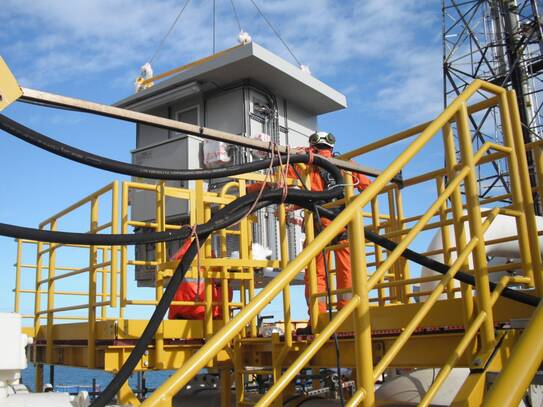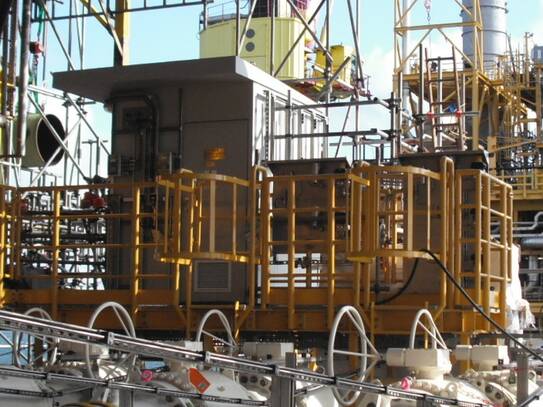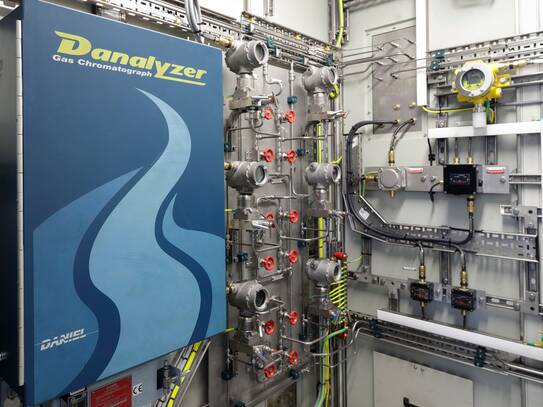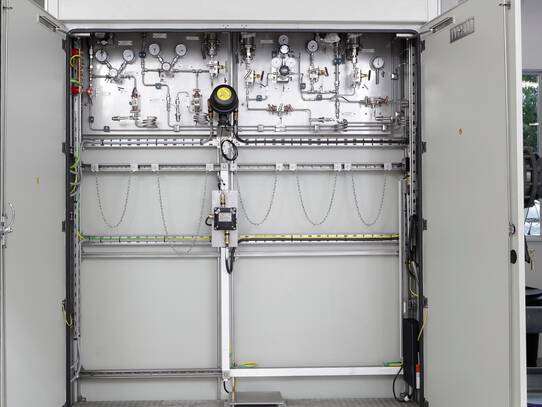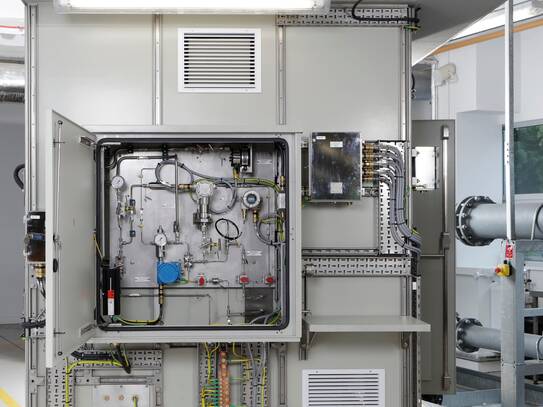GRP shelters provide advanced protection for offshore process analyzers
20. Jan 2020
Lightness and corrosion resistance simplify application in harsh North Sea environment.
Shelters fabricated from glassfibre-reinforced polyester are protecting gas metering instrumentation from the harsh North Sea environment on an offshore platform upgrade project engineered by Oil & Gas Systems Limited. Two outdoor shelters - supplied by INTERTEC Instrumentation - provide lightweight and corrosion-resistant protection for gas chromatograph analyzers and process transmitters mounted above new natural gas export pipelines connecting the platform to an onshore UK terminal. The instrumentation provides critical monitoring data on gas quality as part of the custody transfer metering system.
This particular platform upgrade project presented a number of challenges, including the harsh operating environment of the southern North Sea, and the space and weight restrictions of adding the new facilities onto a working platform. Metering systems for fiscal, allocation and custody transfer applications are a significant part of the systems integration work of Oil & Gas Systems (OGS) - which has a reputation for being able to rapidly design and build efficient solutions for complex project requirements.
Glassfibre-reinforced polyester (GRP) materials were specified to protect the instrumentation.
Lightweight, rugged and corrosion-proof
This allowed weight to be reduced significantly compared with metal shelters. GRP construction also provided excellent protection against both the harsh weather in the offshore location, and the local environmental conditions. INTERTEC Instrumentation was selected to build the custom GRP shelters because of previous good experience of working with the company on projects, including shelters and enclosures already installed in the same gas field.
The lightness of GRP compared to steel helped to reduce the size and weight of the metalwork structure that mounts the shelters directly above the export pipelines. The location - in the middle of a crowded working platform - also presented access difficulties. So, natural ventilation according to IEC EN DIN 61285 was specified. This eliminates routine maintenance visits that would be required with other shelter ventilation approaches such as fans or an HVAC system.
To support natural ventilation for safe operation in the hazardous environment, INTERTEC supplied explosion-proof heaters and installed louvre panels at the top and bottom of shelter walls. This maintains the interior environment a few degrees above ambient temperature, and ensures an efficient convection cycle to meet the air change requirements of OGS. All of the shelter fittings, apart from the finned aluminium bodies of the heaters, are fabricated from 316 stainless steel for corrosion resistance - including the panic bar door opening mechanism.
"It can be a significant challenge to add new facilities into existing processing plants, and especially so when they are located offshore," says Anthony Dingle, OGS's Sales Manager. "INTERTEC's ability to design and build custom enclosure solutions was a big help to us in meeting the design constraints of this complex and fast-track offshore instrumentation project."
In total, two walk-in shelters and two large cabinets were built by INTERTEC to meet the custom shape, size and weight constraints. Each shelter houses an identical instrumentation system including pressure reduction sample conditioning equipment, a Danalyzer gas chromatograph, Rosemount pressure transmitters, calibration facilities and various safety devices and accessories. The two cabinets house cylinders to supply the required gas for calibration purposes, along with associated pressure regulation, measurement instruments, tubing connection and flow control components.
The GRP material used by INTERTEC to build the shelters and cabinets is a proprietary multi-layer composite with moulded GRP panels enclosing polyurethane foam insulation, protected by gel-coated surfaces.
This composite material has a very high thermal resistance, reducing the amount of energy required to heat equipment. A further benefit of Intertec’s approach to shelter fabrication is an advanced gel-coat, which is applied in a much thicker layer than alternatives such as paint. It protects against ultraviolet (UV), and is highly effective against abrasion. It offers exceptional environmental protection and resistance to ‘corrosion’ (GRP does not rust or degrade in any meaningful way), allowing maintenance-free lifecycles of 30-40 years - more than enough to meet the anticipated cease of production date for the platform.
The gel-coat also incorporates a unique nanotechnology treatment that provides conductivity to dissipate static electric charges safely to ground - protecting against sparking in hazardous areas. Developed for INTERTEC by BÜFA, the coating employs single-wall carbon nanotubes (SWCNTs) to provide conductivity. Because the SWCNTs are only around 1-2 nanometres in diameter, they enhance surface smoothness. The gloss retention after accelerated weathering tests of this surface is some 50% better than the previous coating technologies used. This technology is behind the significant improvement in resistance to UV of INTERTEC's shelters. Previously, exposure to high UV levels over the long term could lead to surface roughening - which is sometimes referred to as 'chalking' or 'frosting'. INTERTEC's weathering tests have demonstrated that the new coating will withstand extended exposure to very high UV levels - providing hitherto unachievable protection for GRP field enclosures destined for ultra-harsh environments such as offshore platforms, deserts and Arctic environments.



